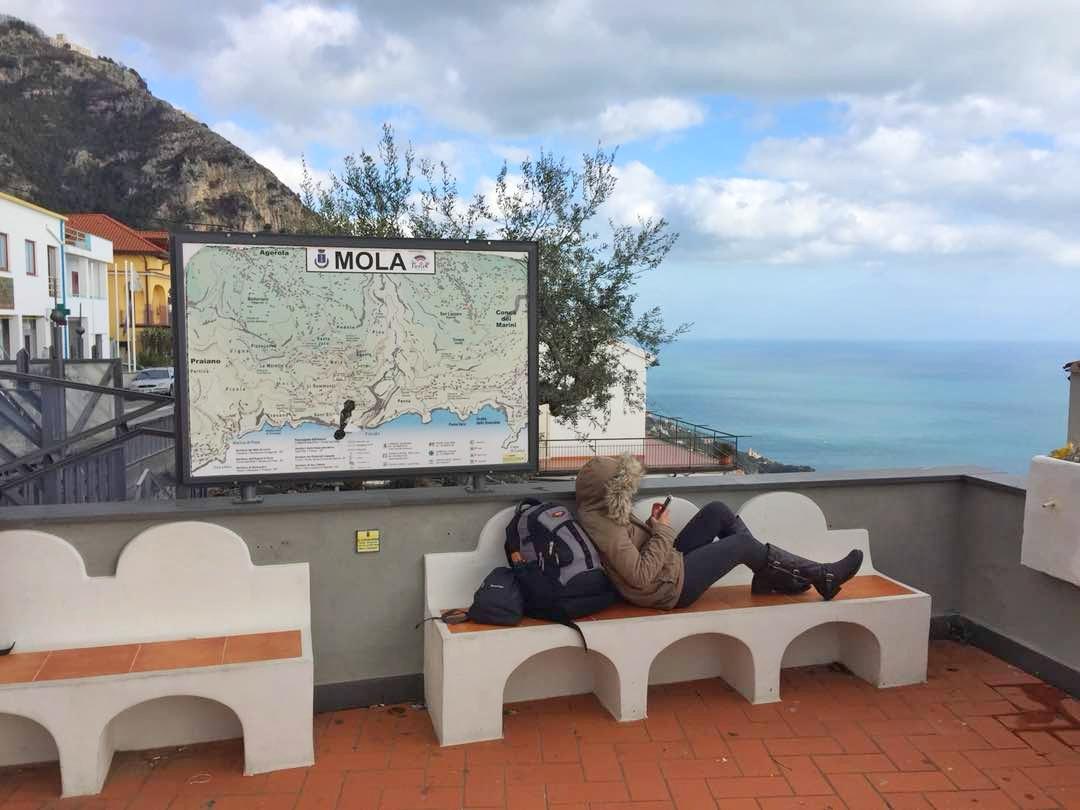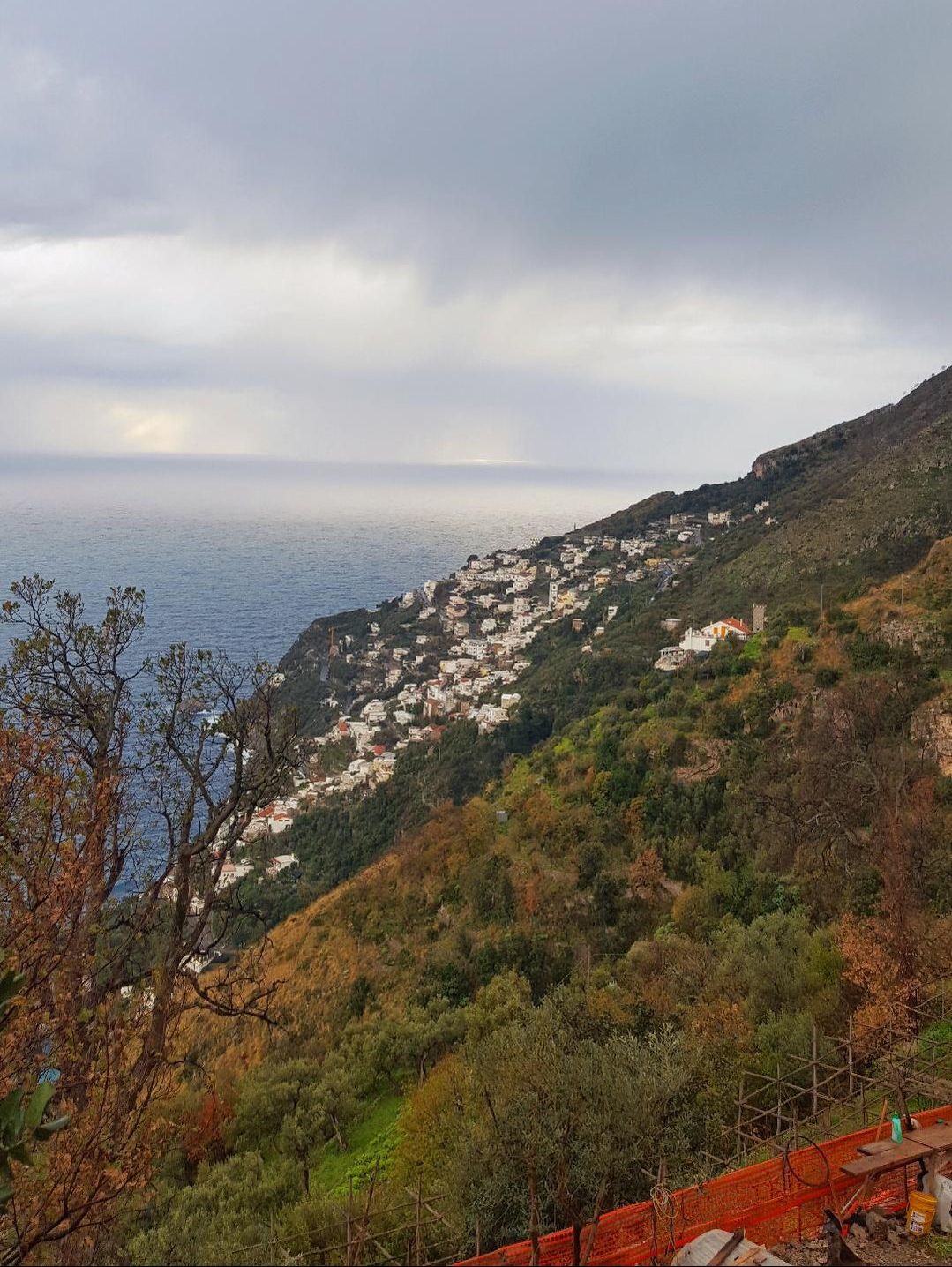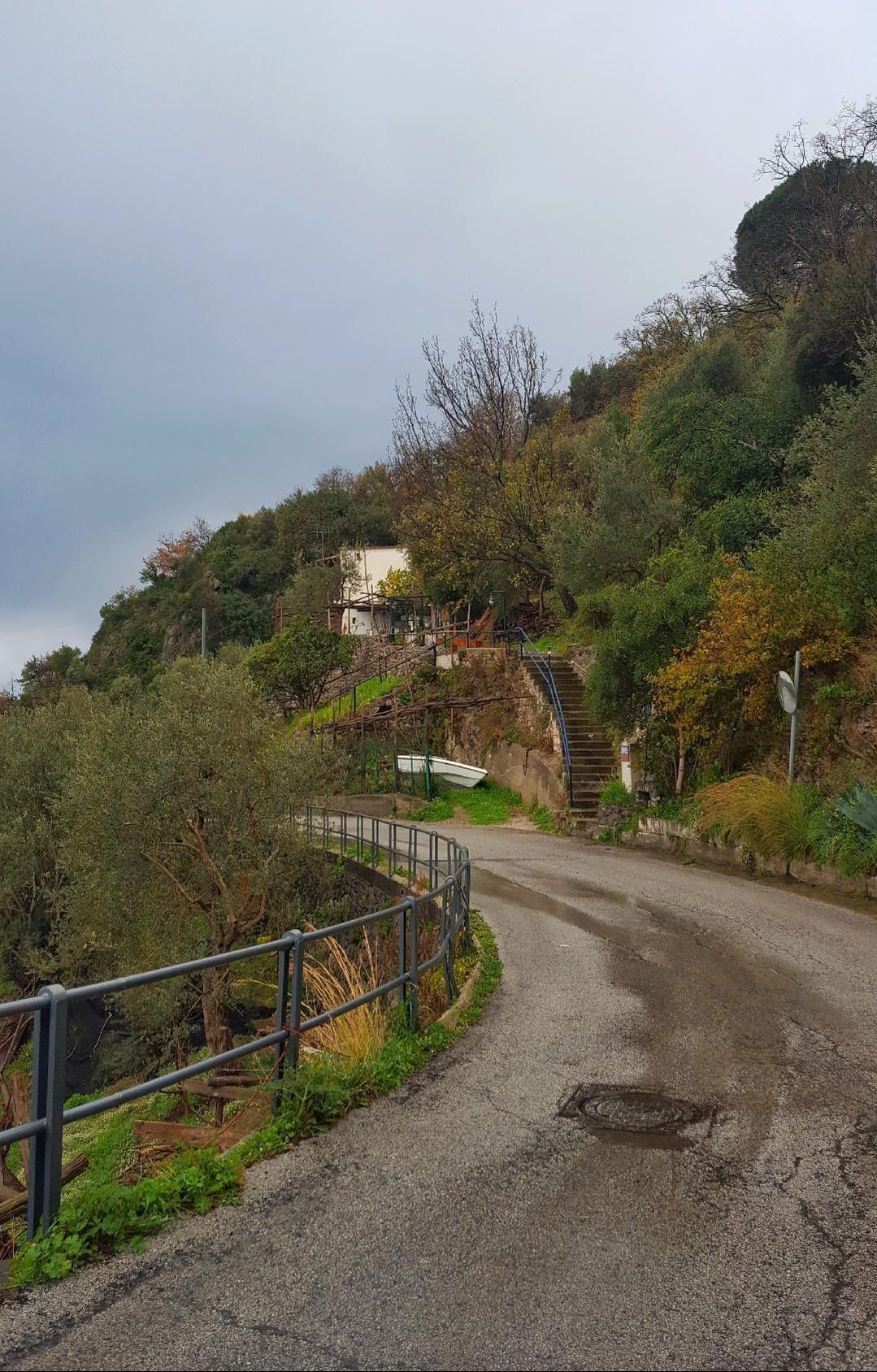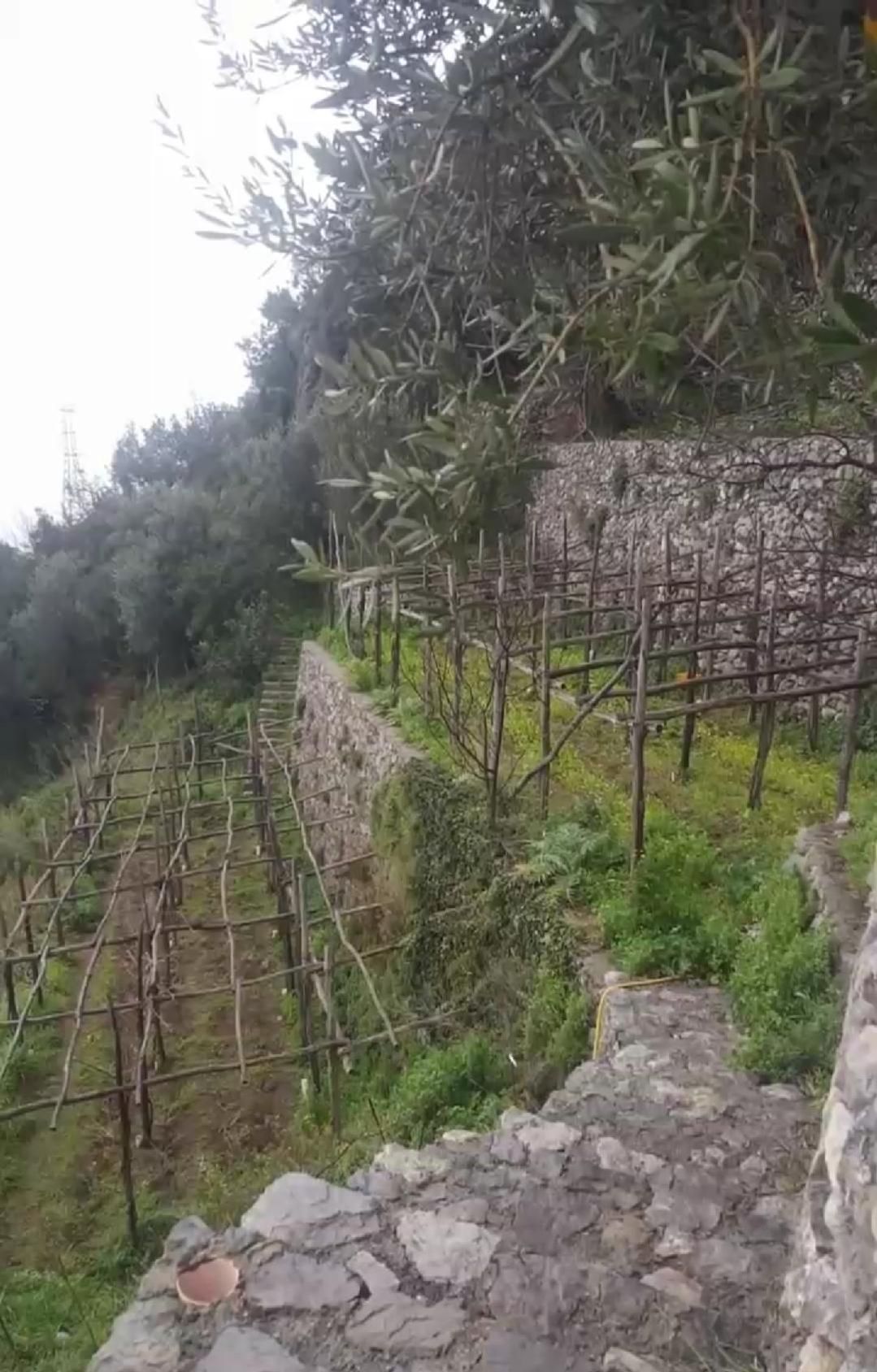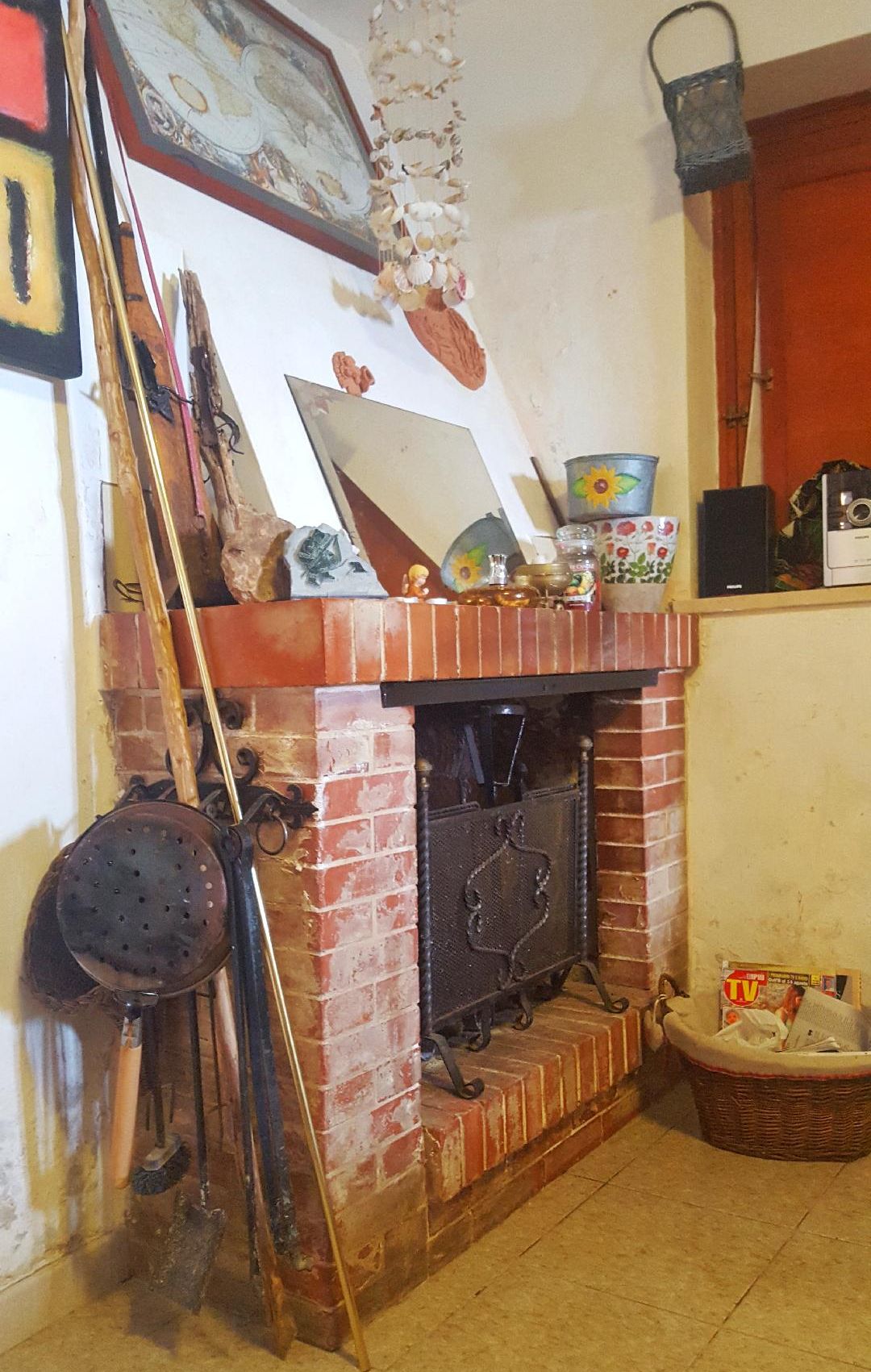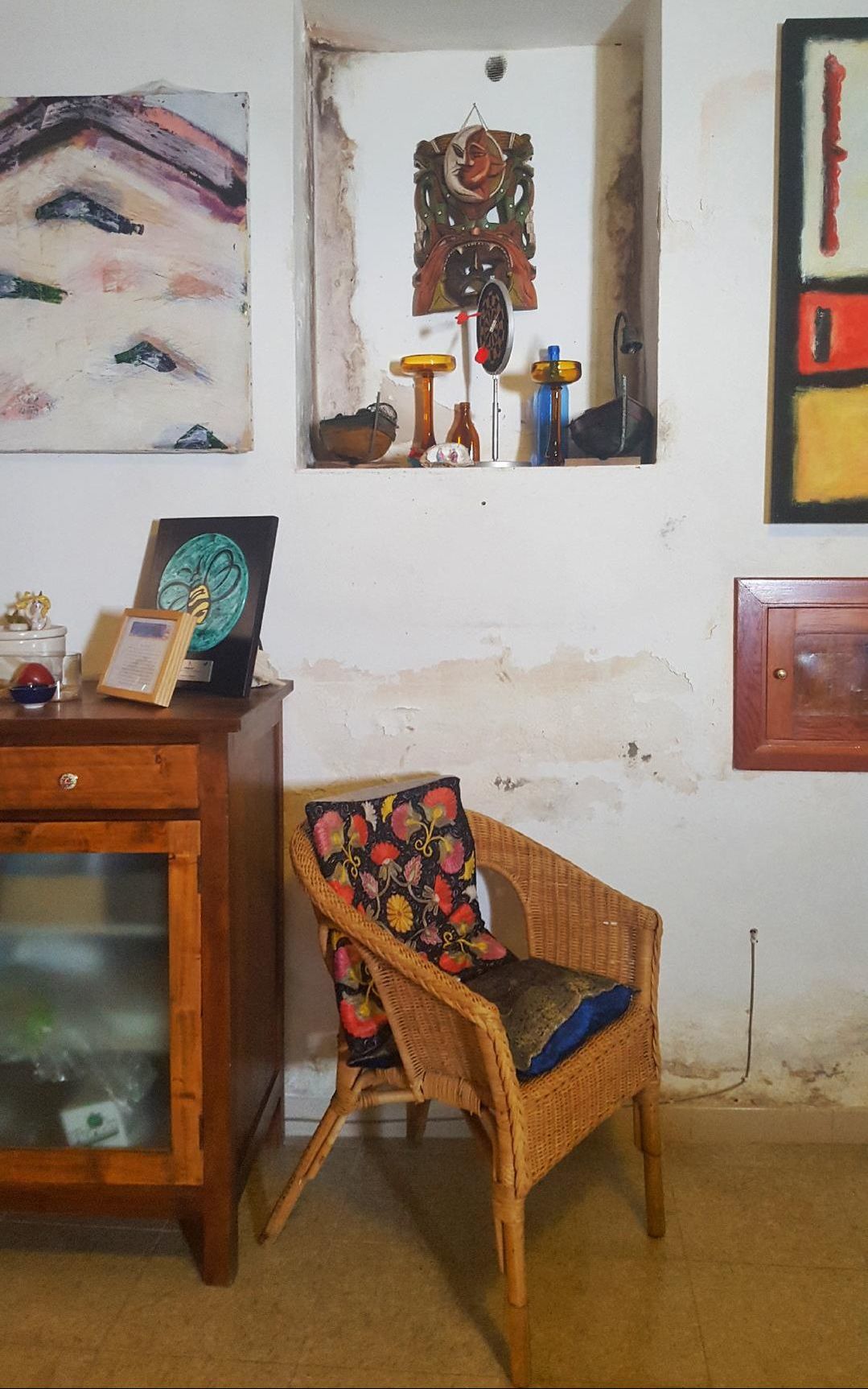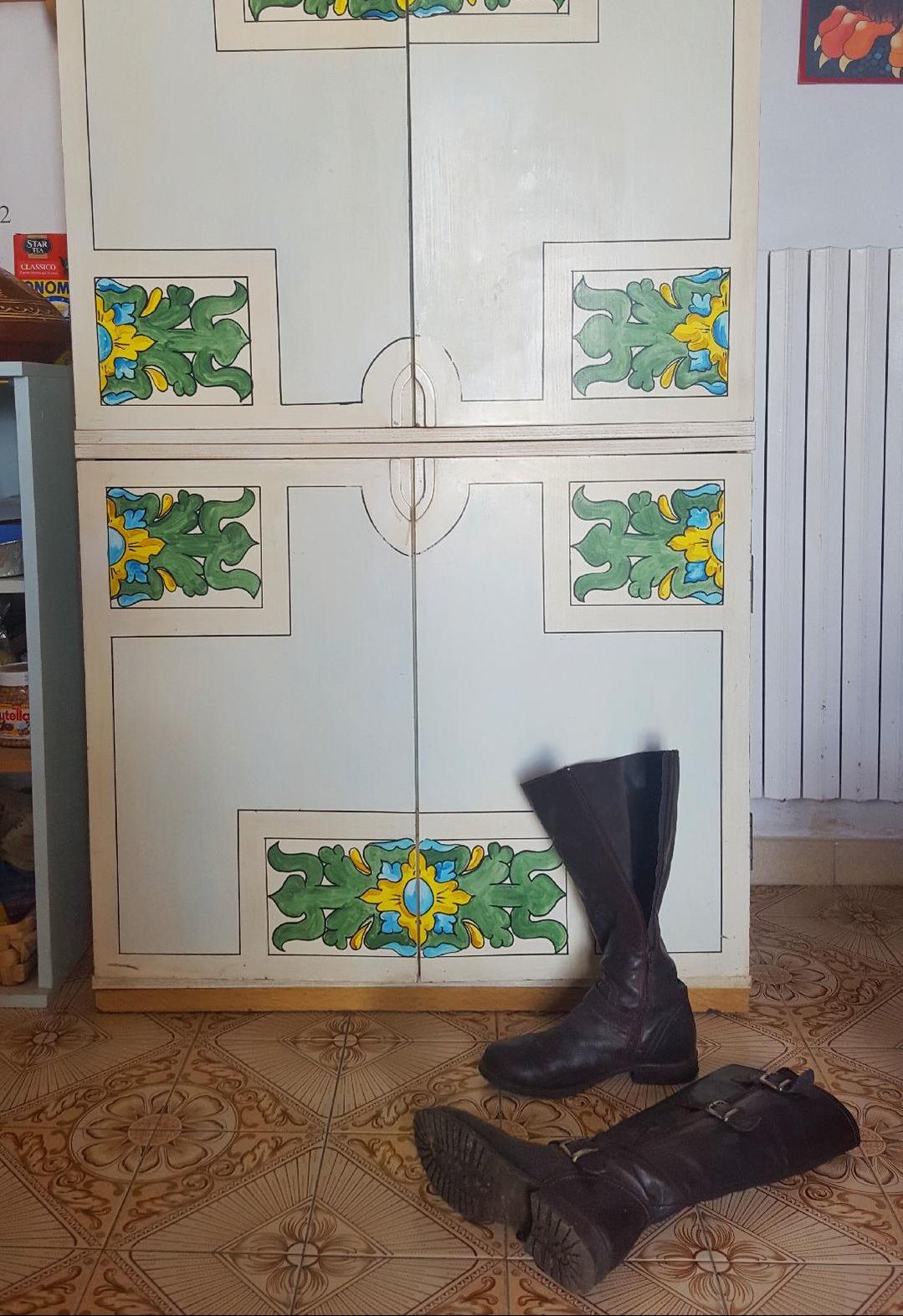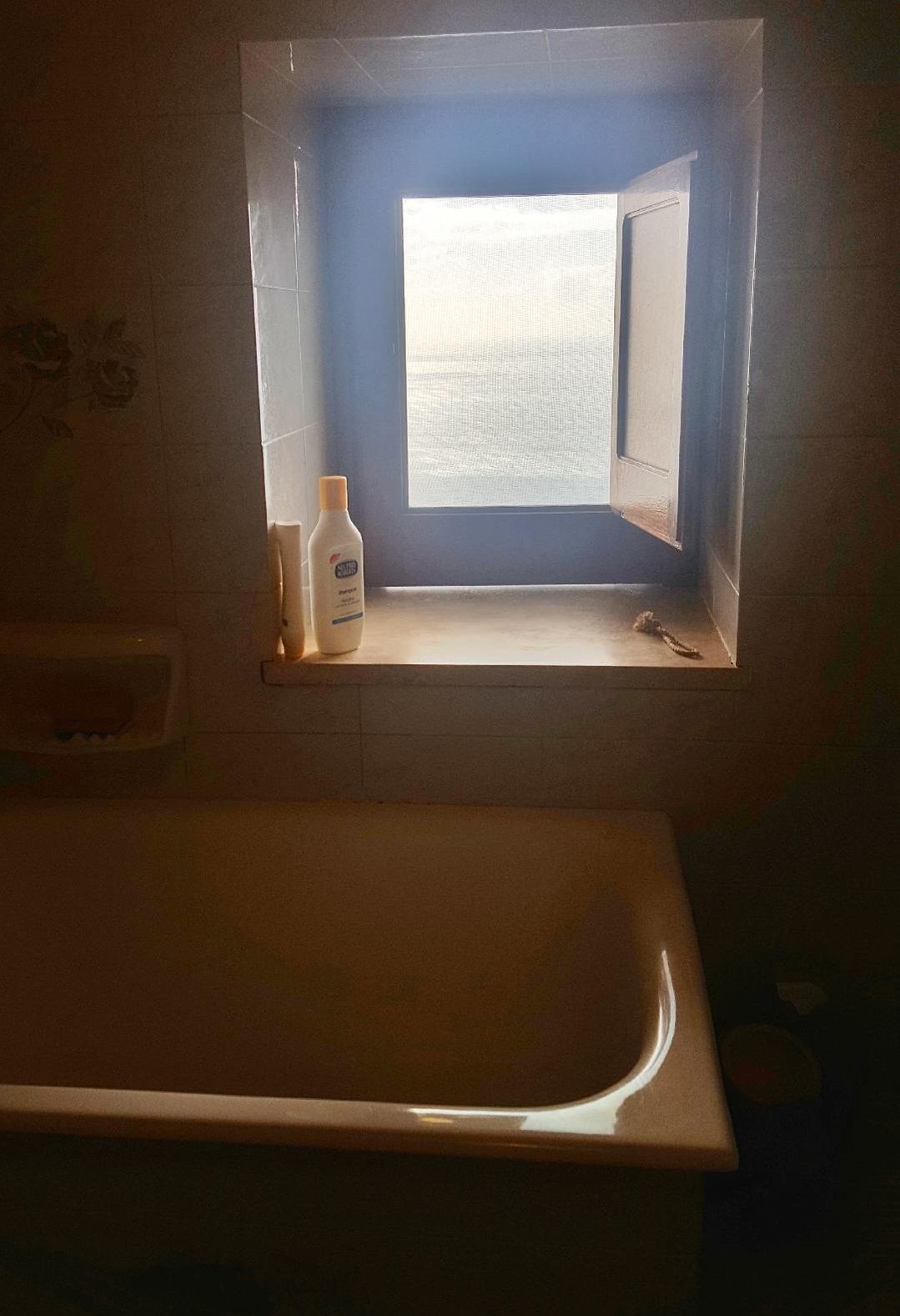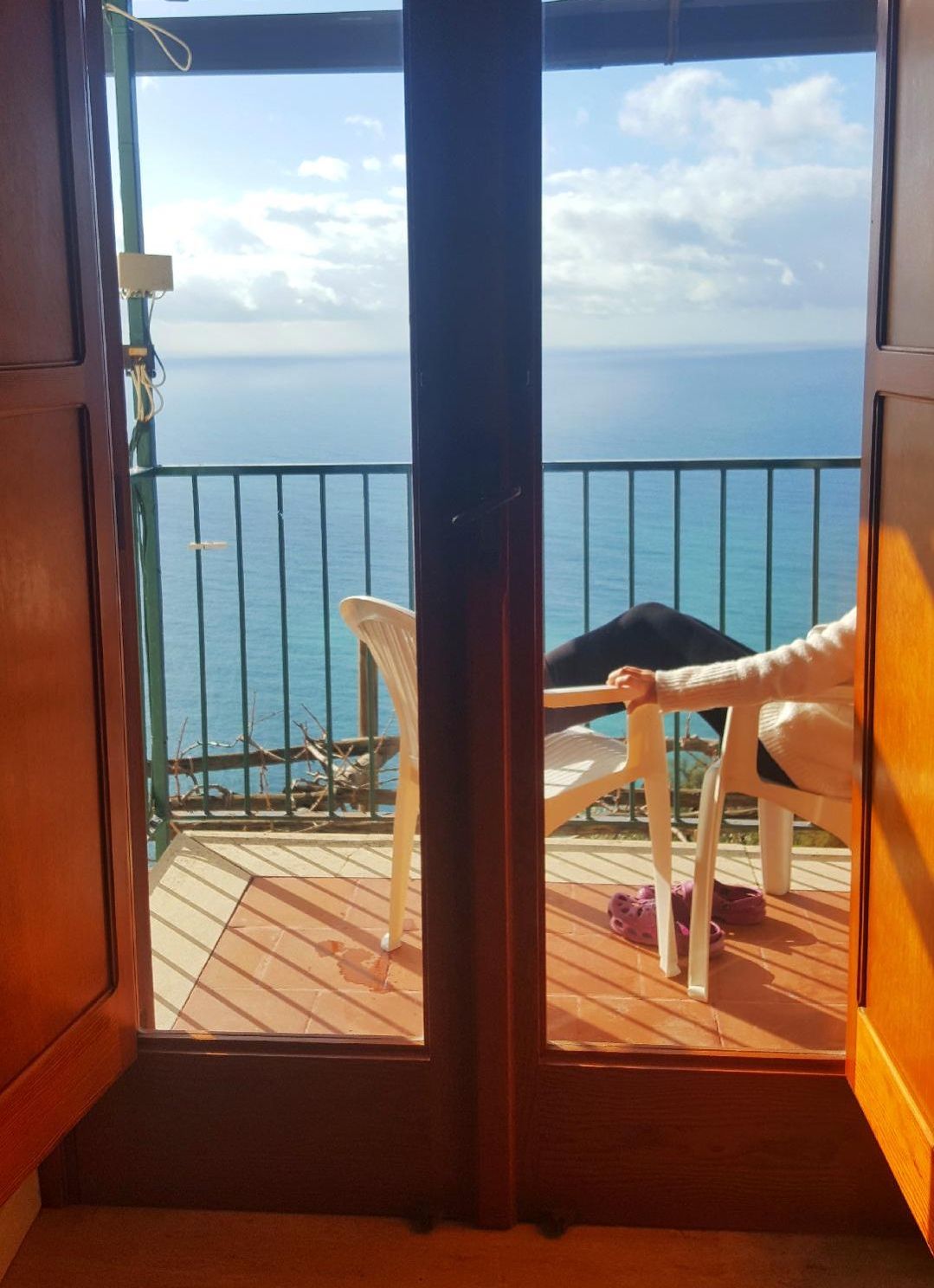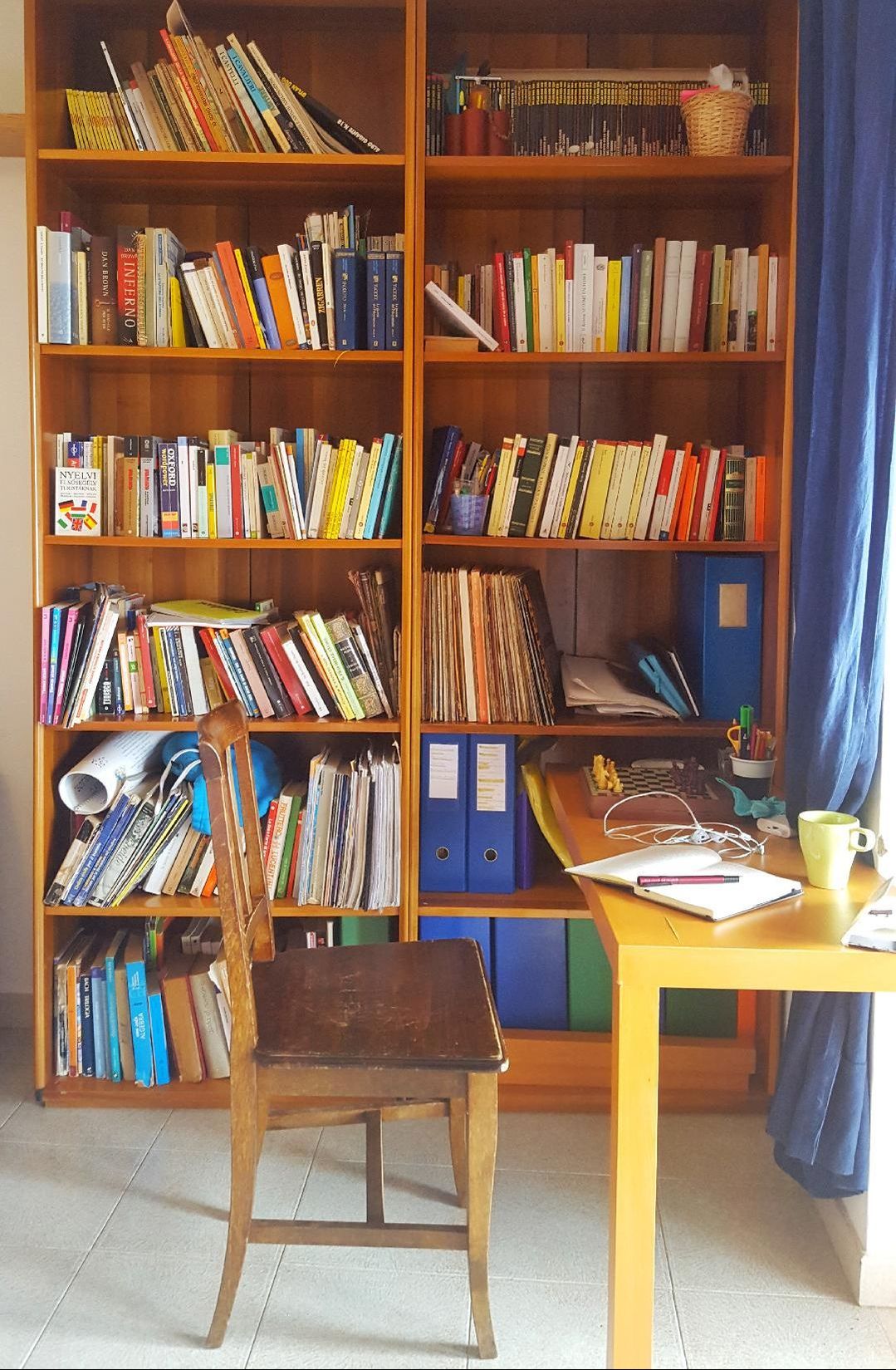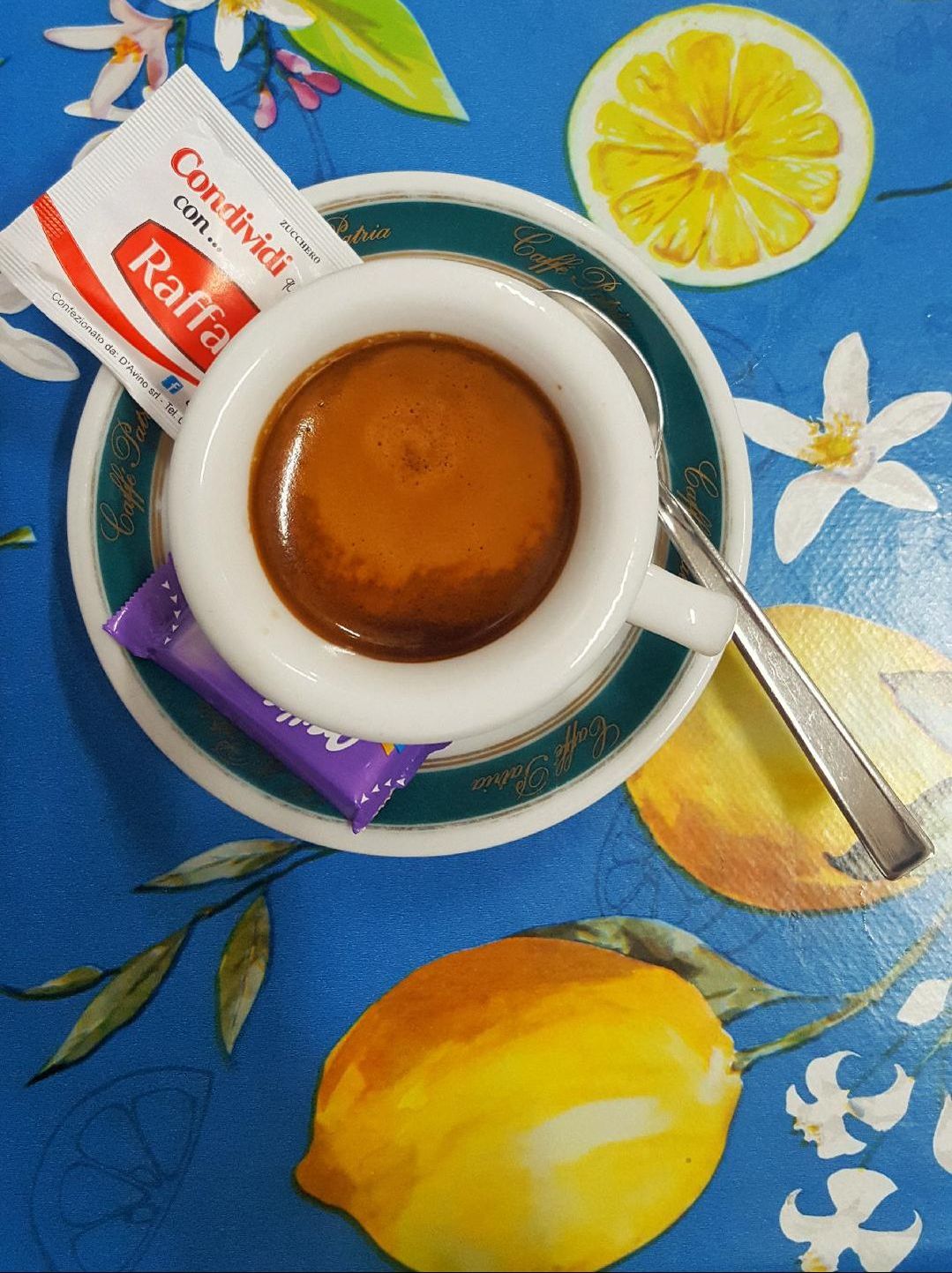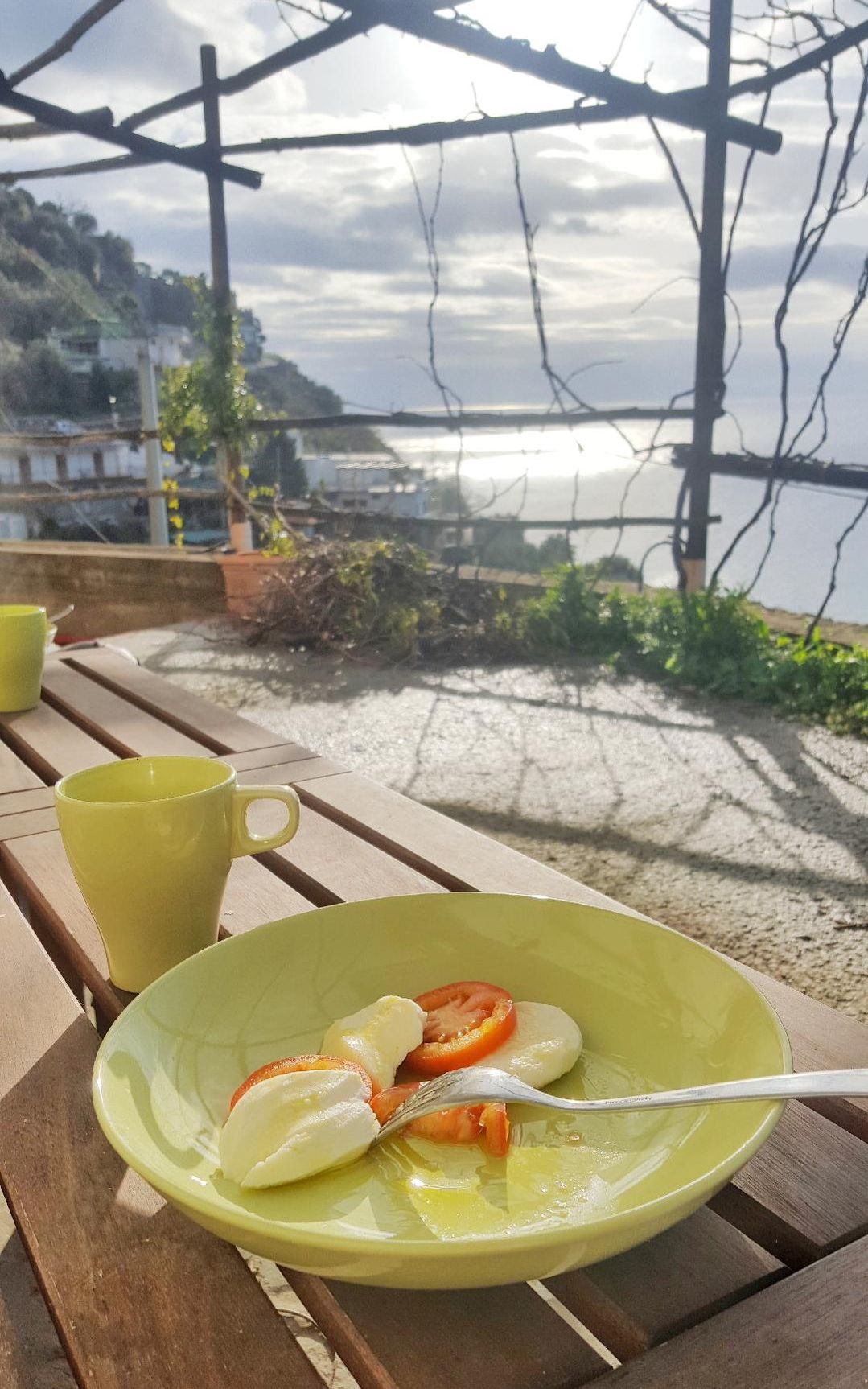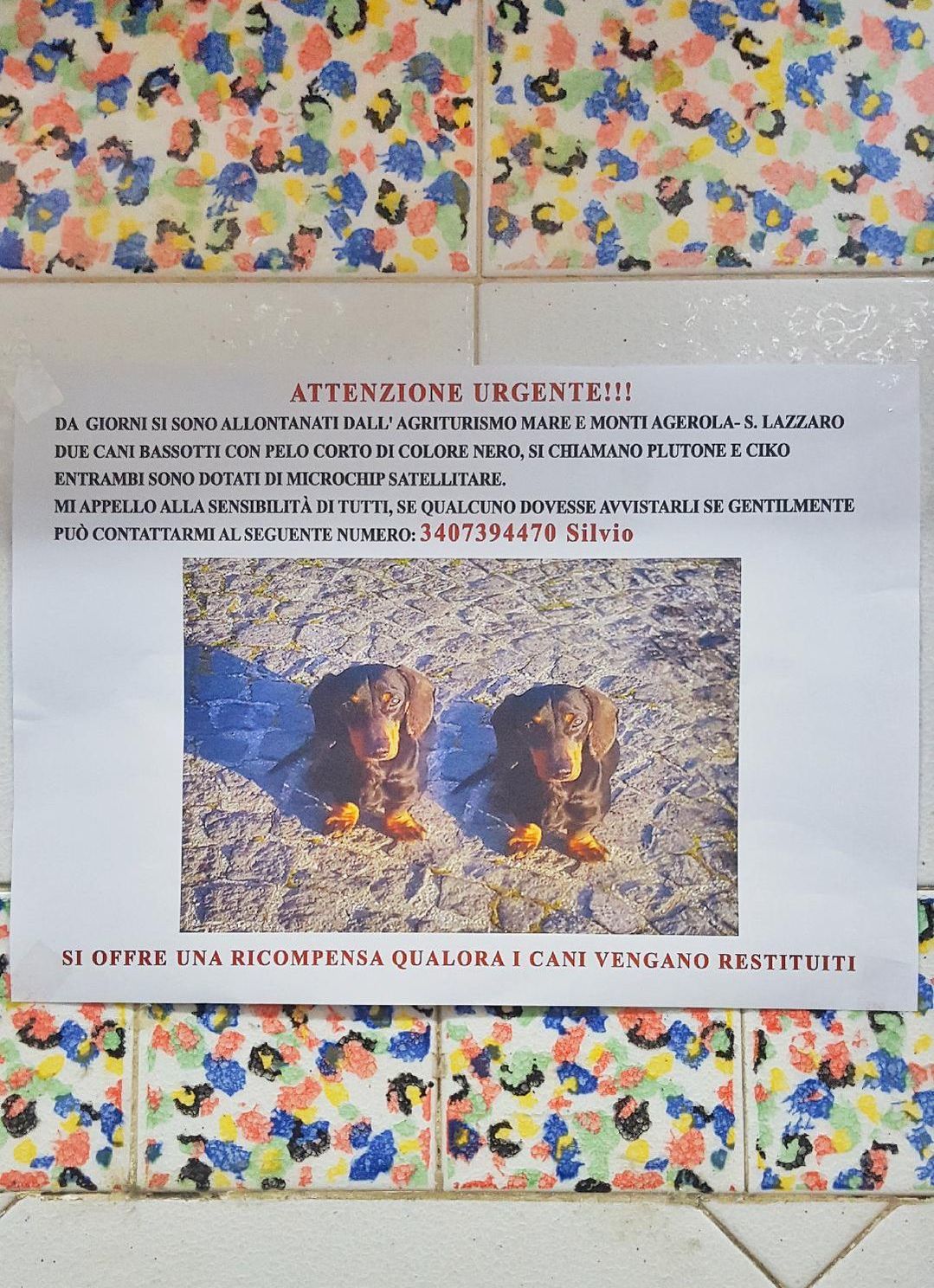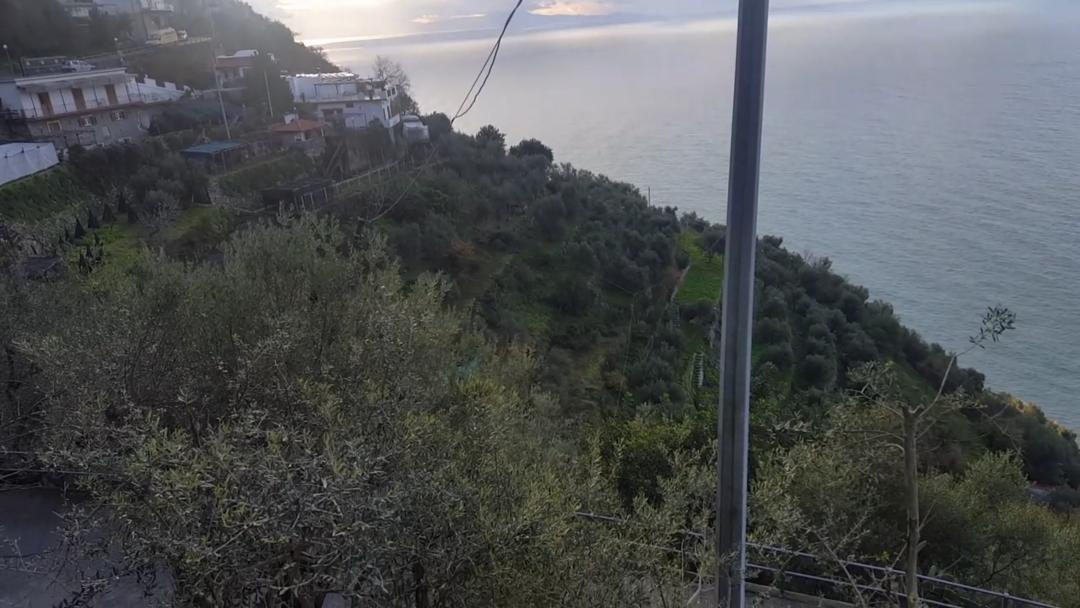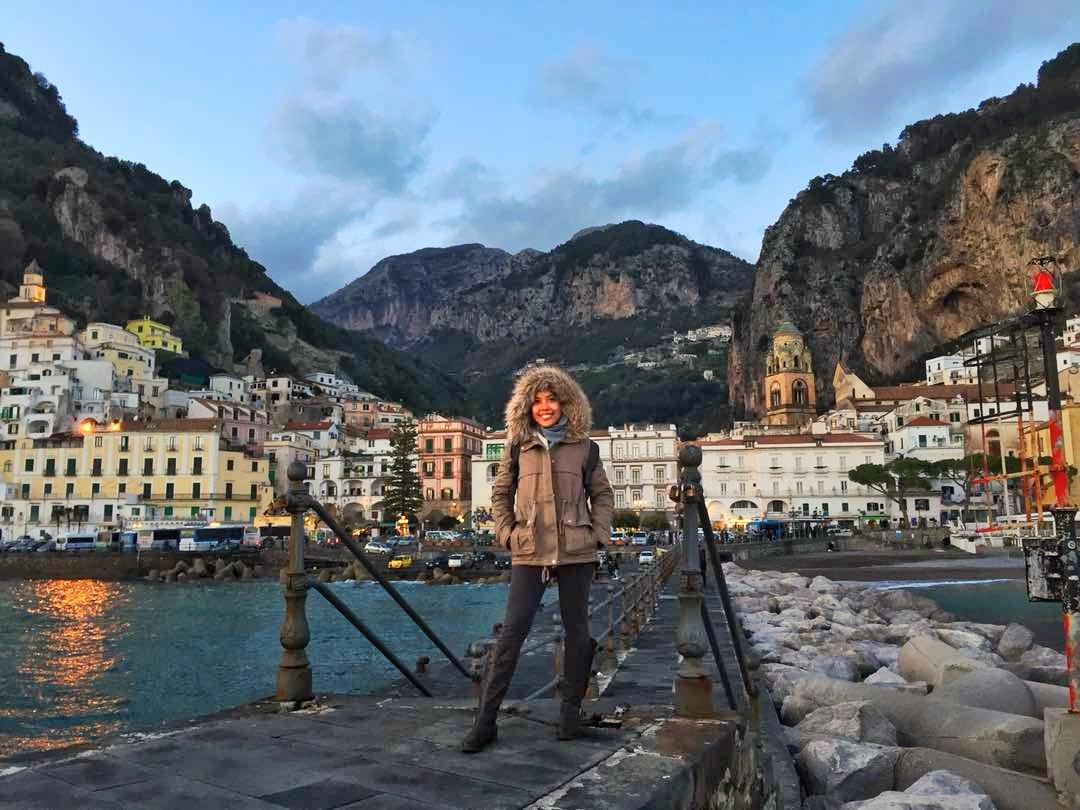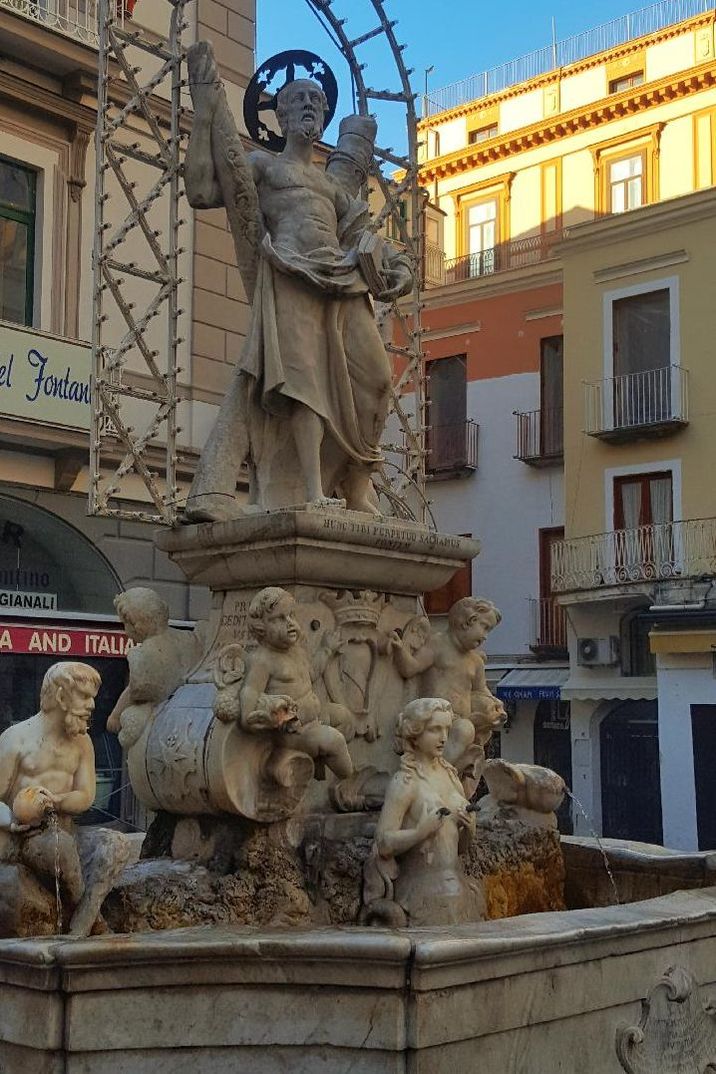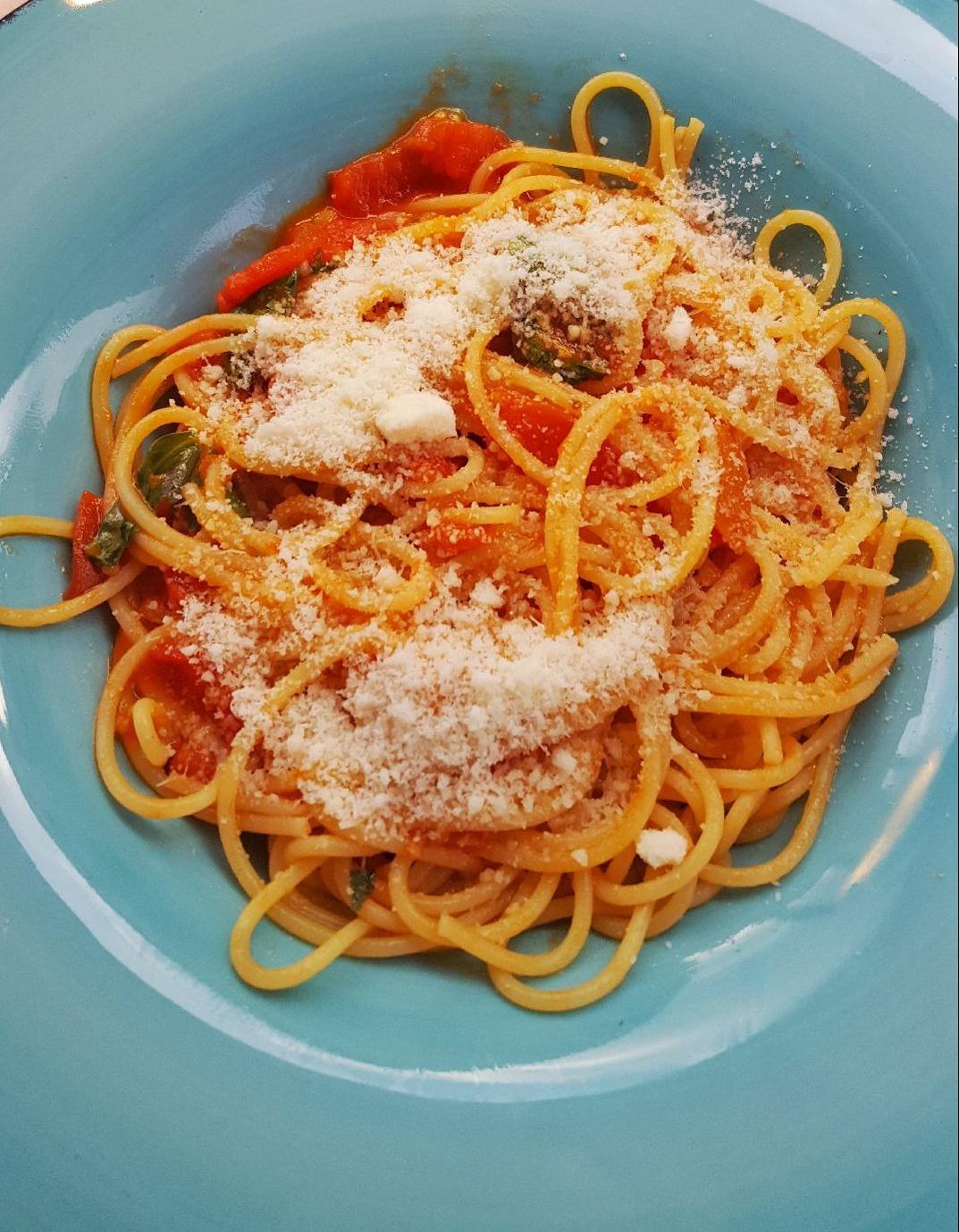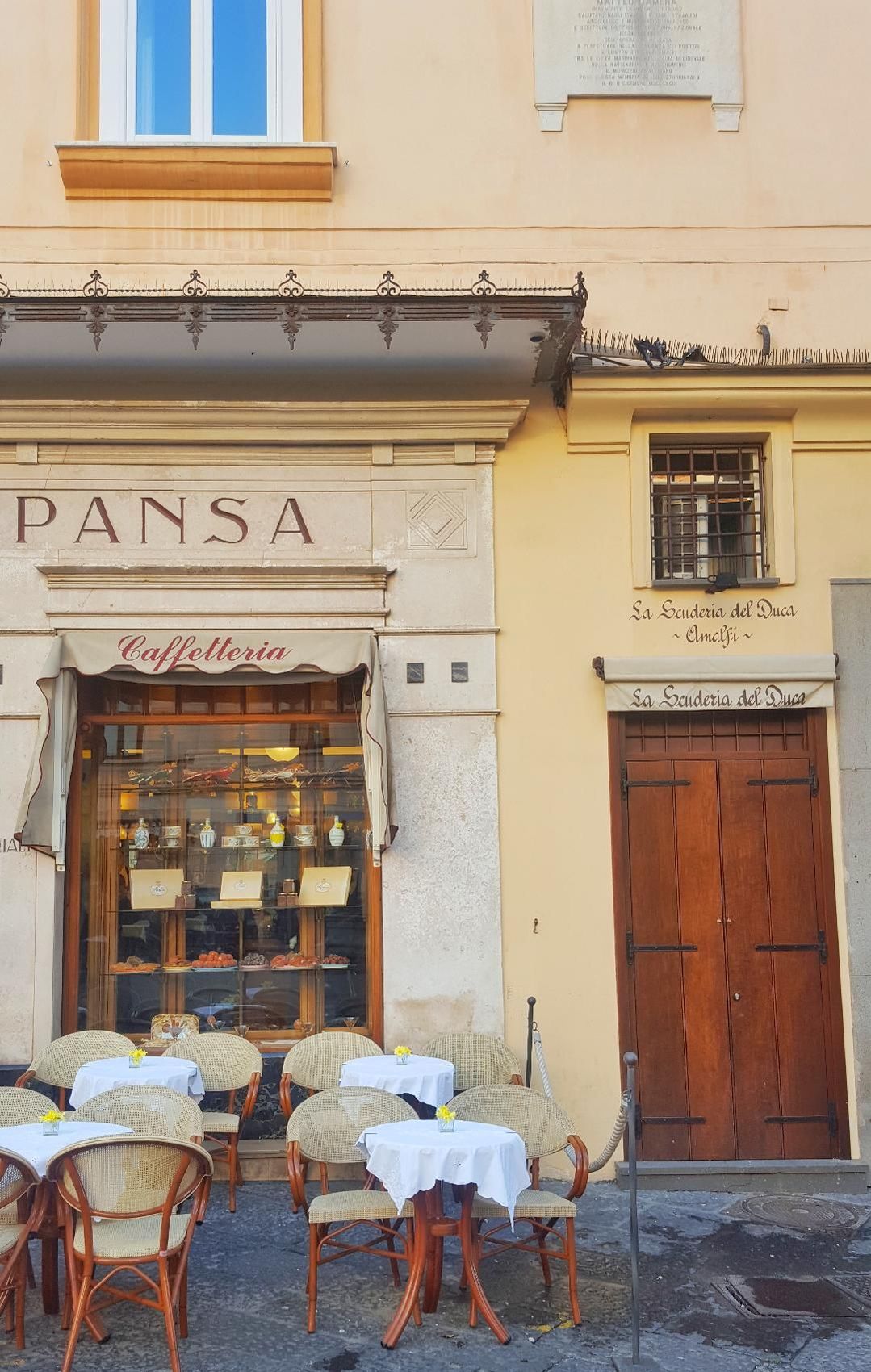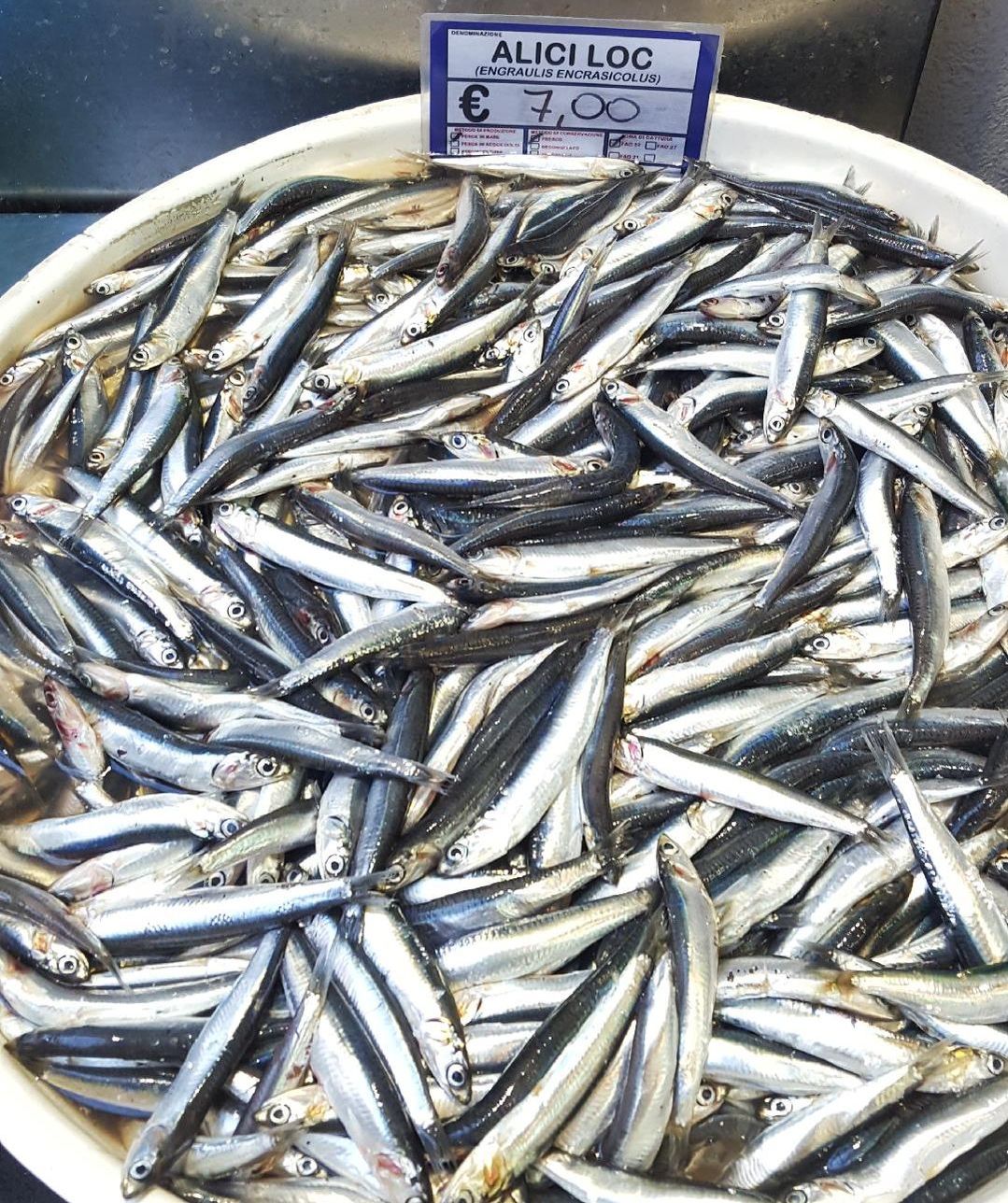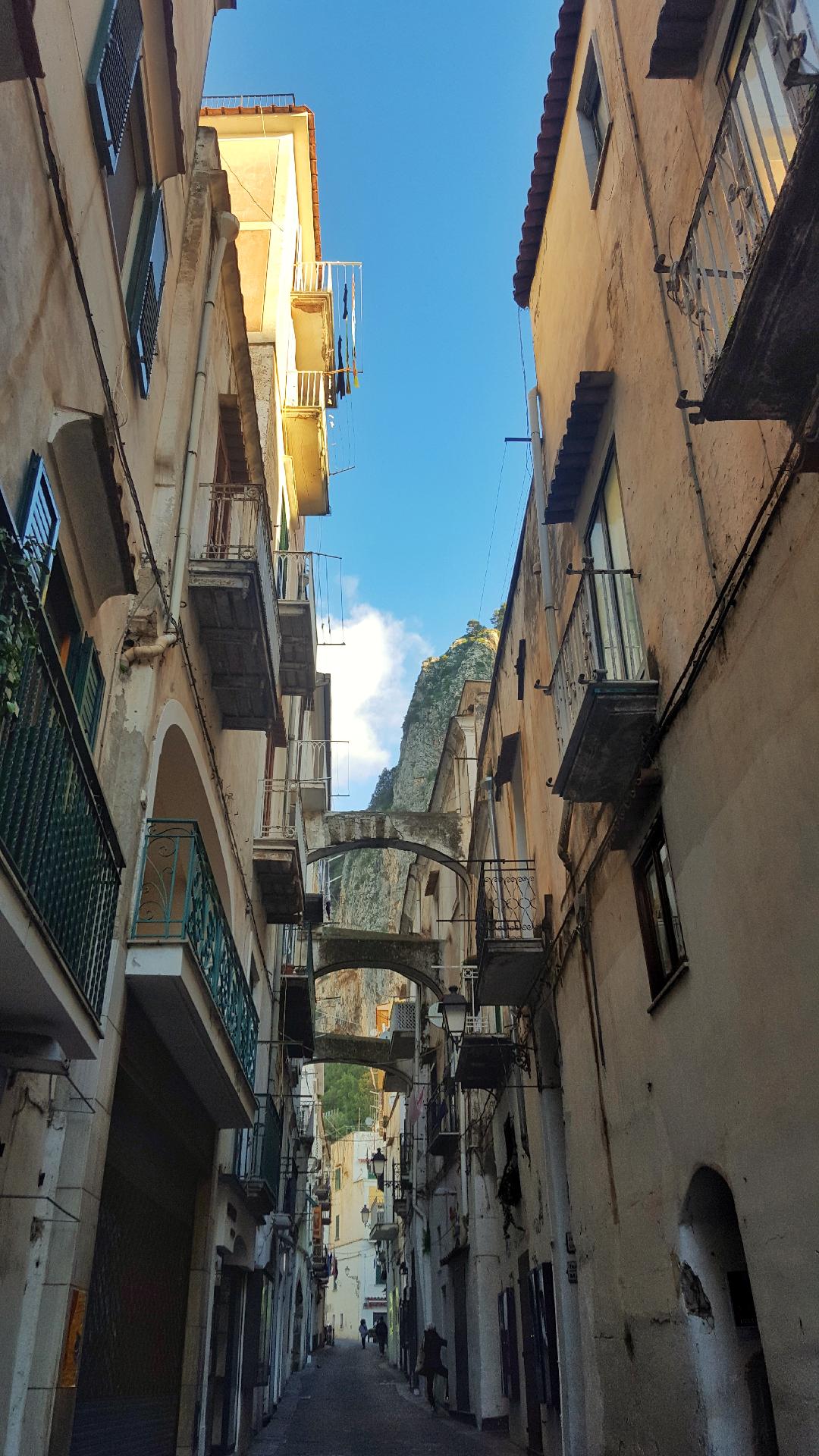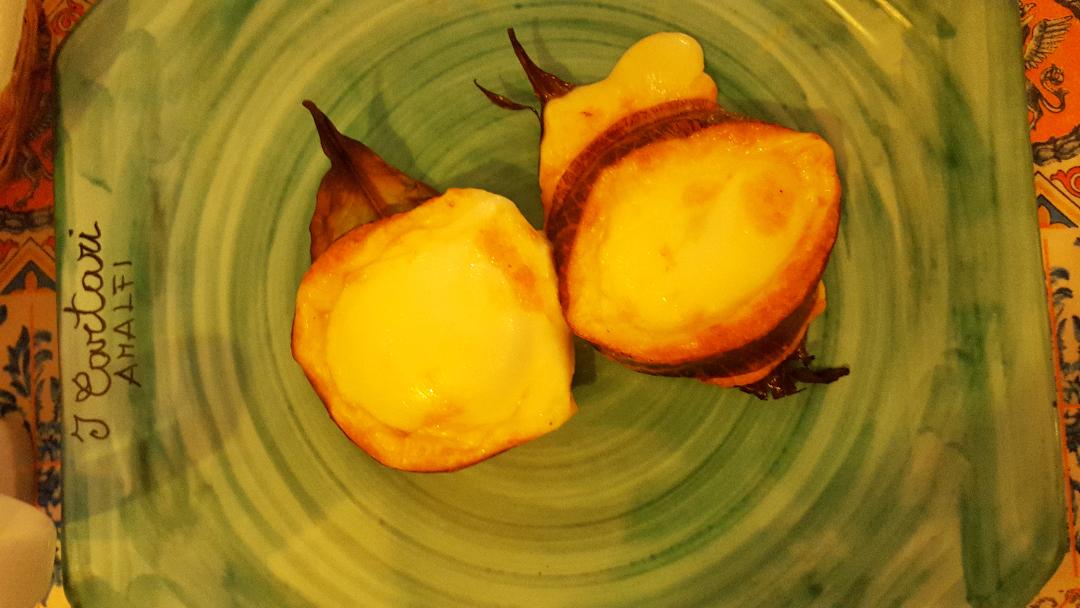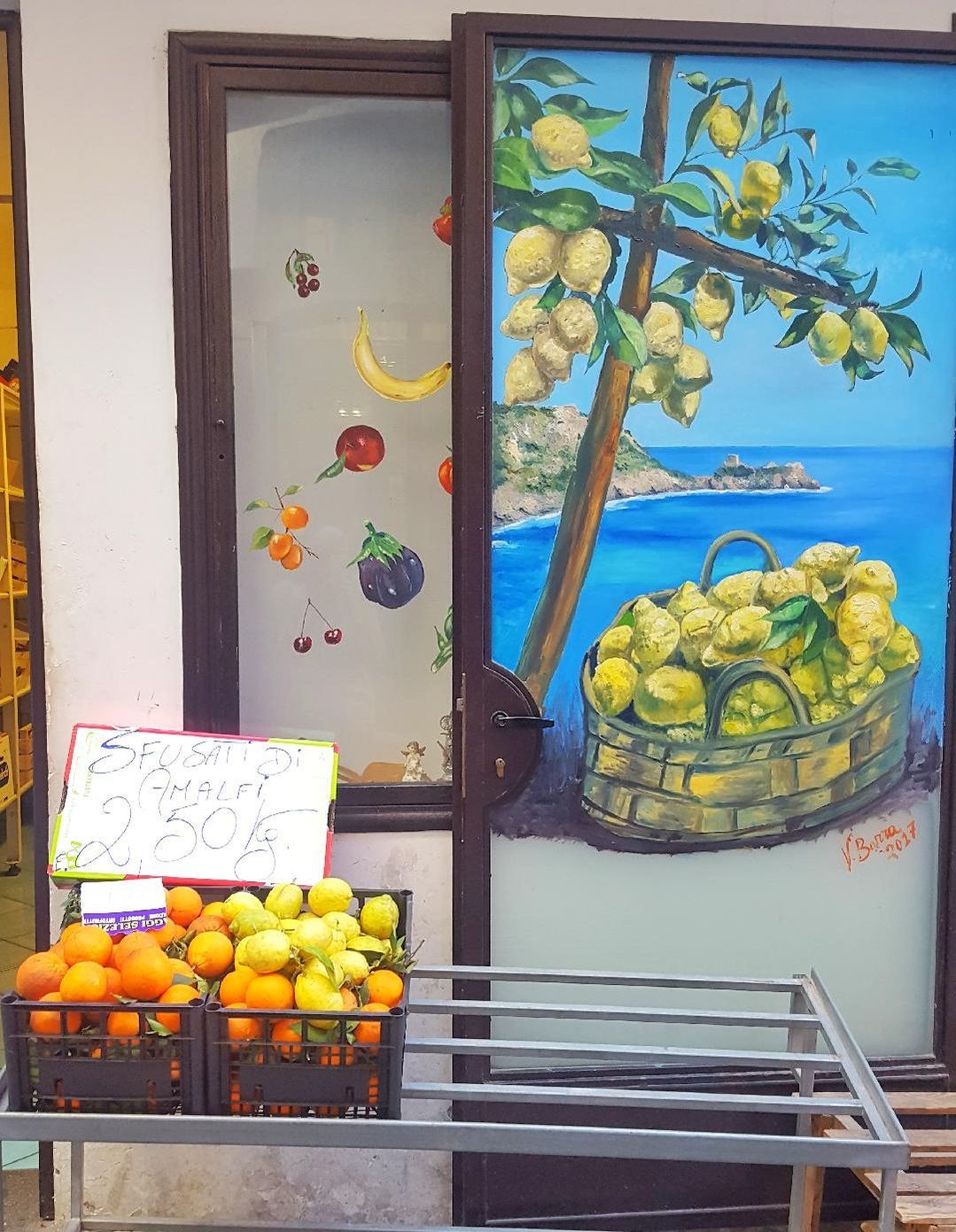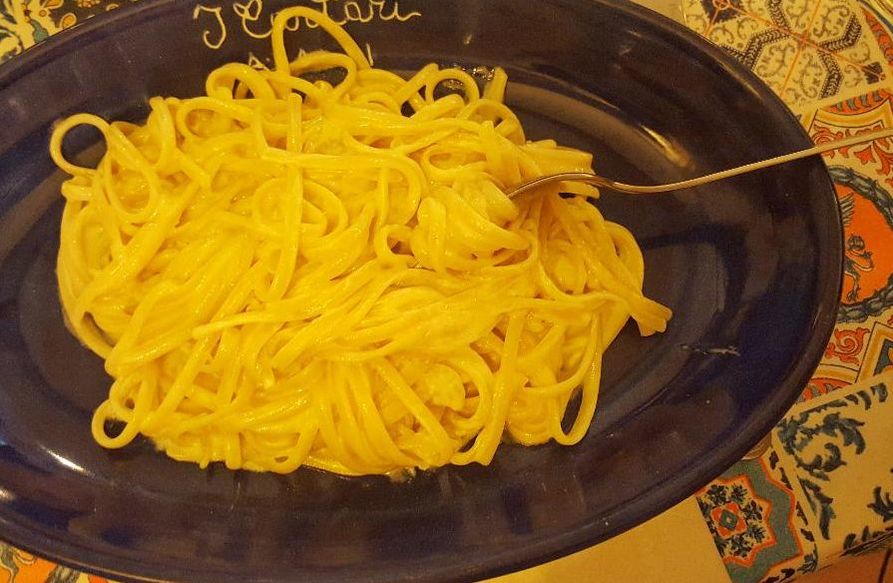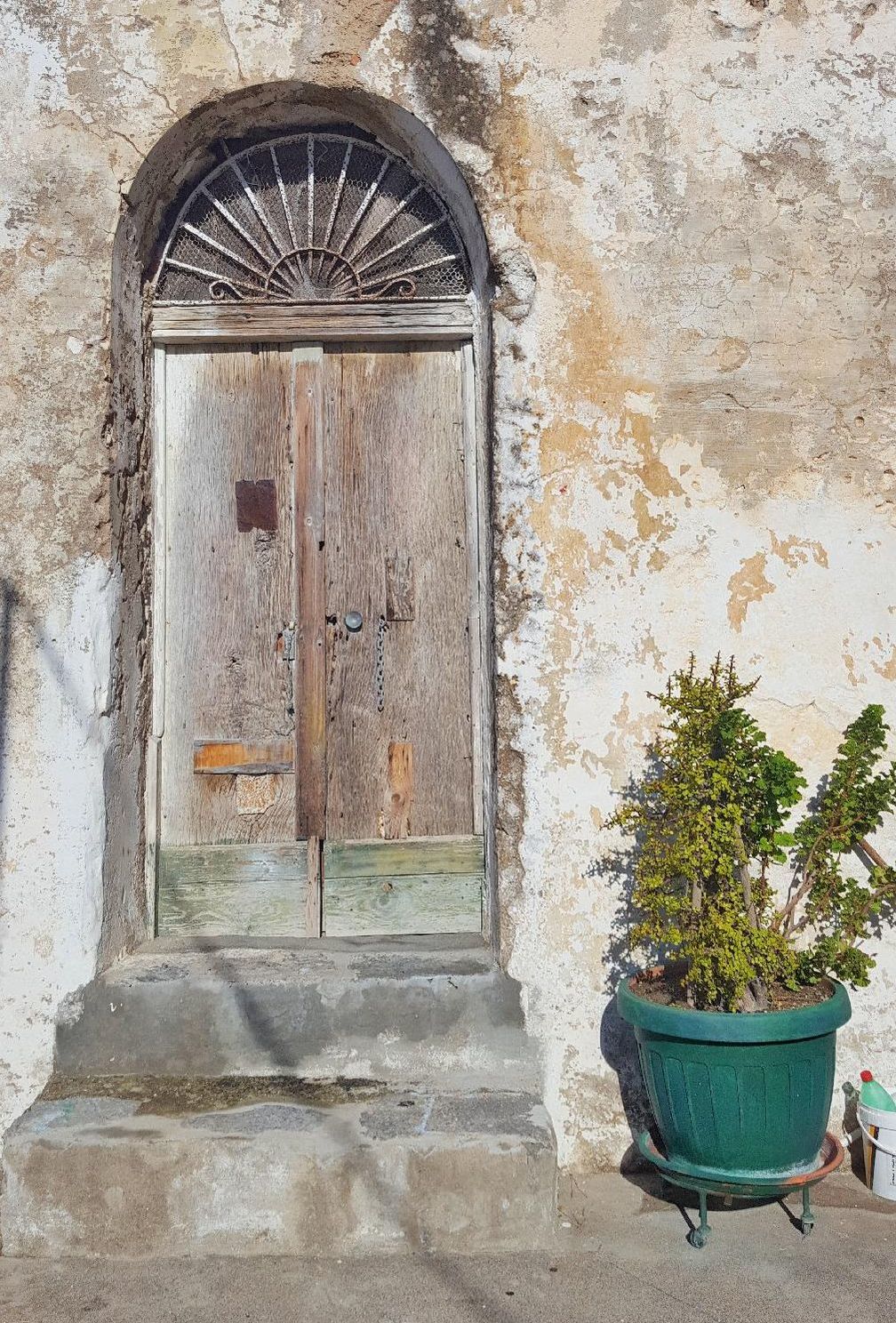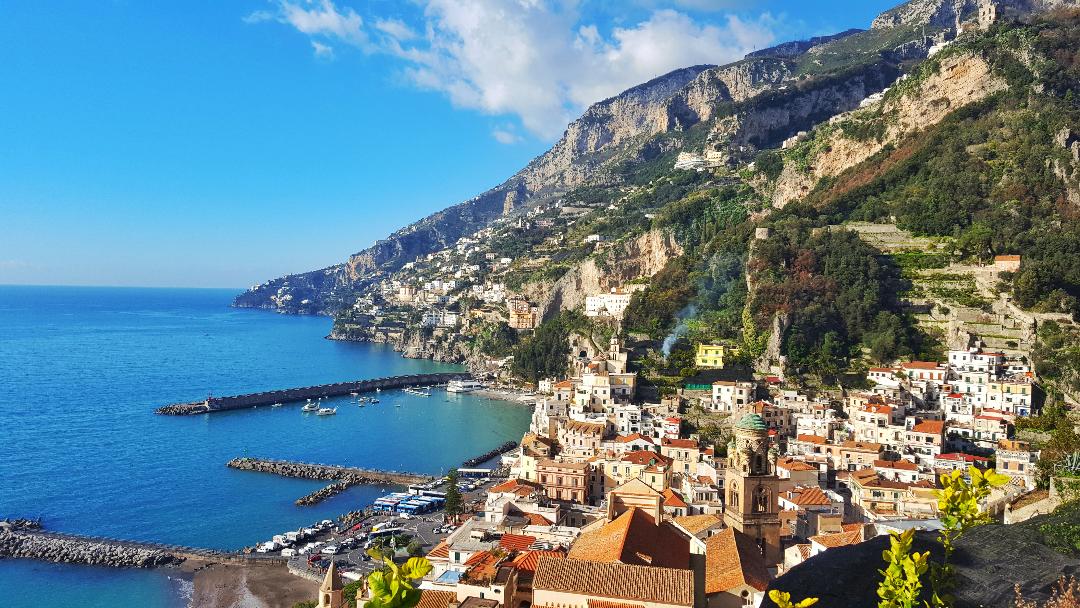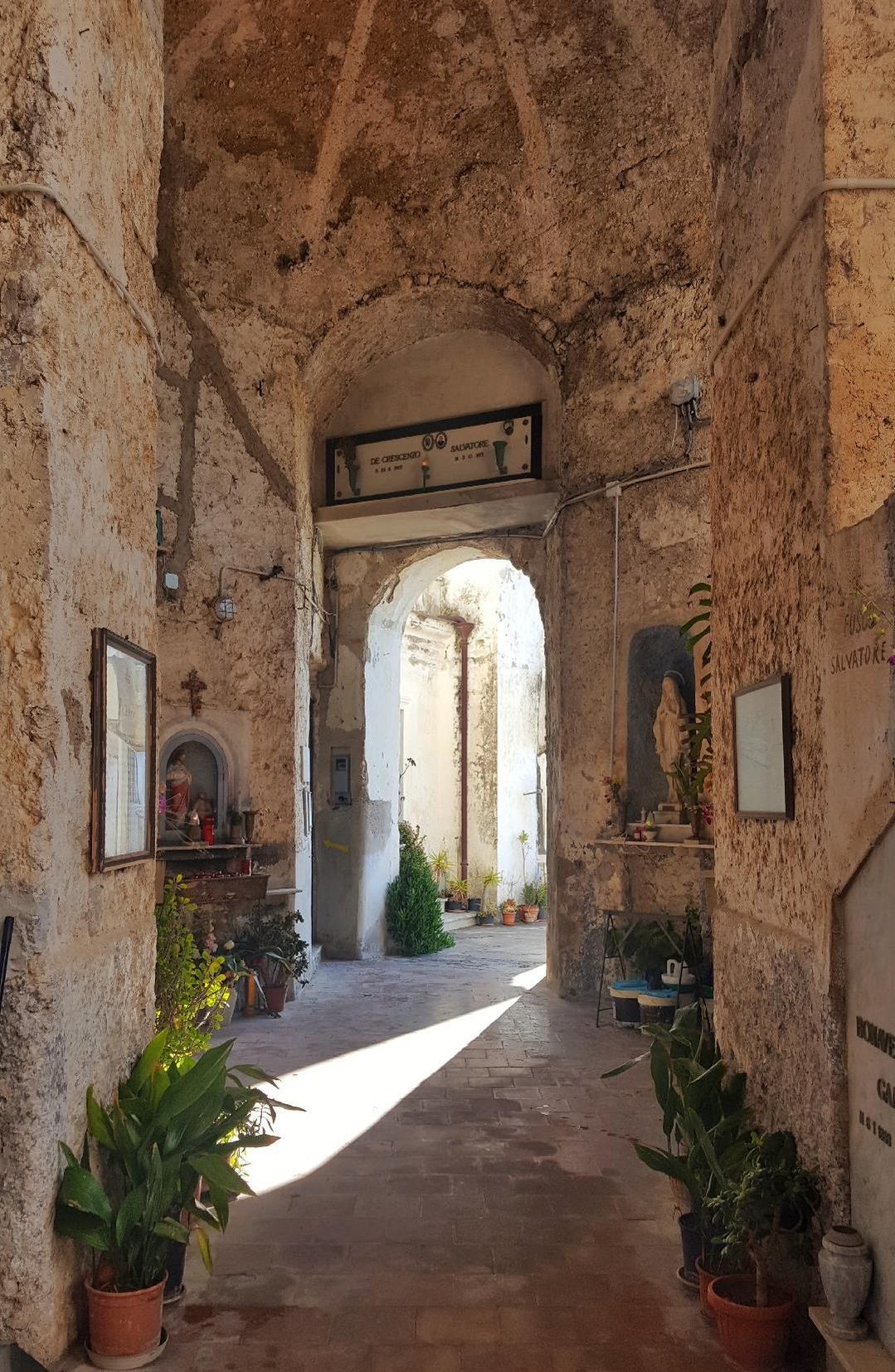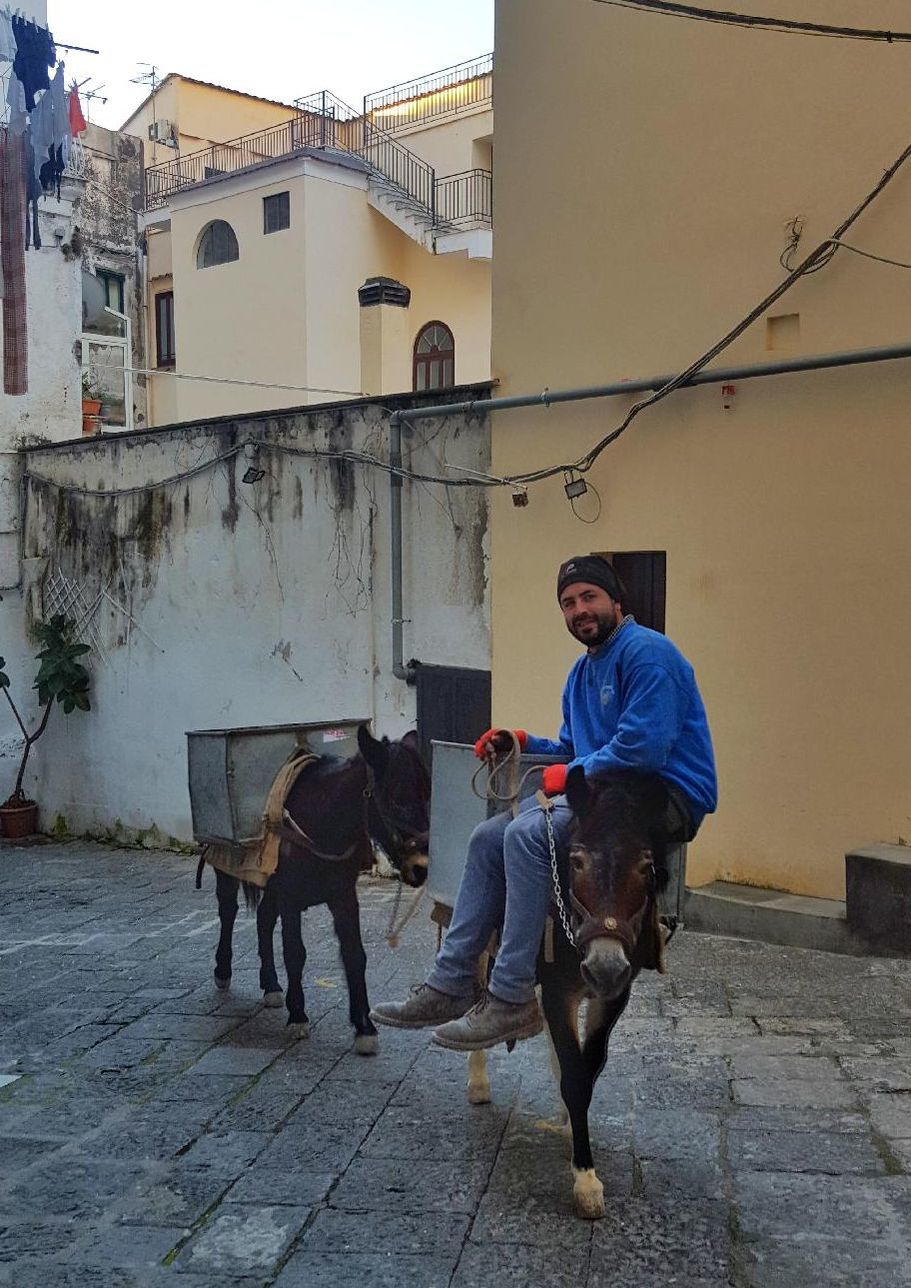|
Furore is part of the greater Amalfi coast, yes, but it is not exactly Amalfi as what you would see in the postcards. It’s actually about 30 minutes away from Amalfi town, so really, Furore is a small, quiet, coastal village a bit off from touristy Amalfi. And rightfully so, as it has its own charm and personality. I arrive in Naples and after a healthy dose of Neapolitan pizza (of which I finished a whole pie by myself #FATamal), I am greeted by my host, Raniero. We then proceed to drive to Furore in his white Fiat Panda, past fields, villages, coastlines through narrow, curvy roads that would pass for a Formula 1 track. Before I manage to get really sick we arrive, down a small narrow road that leads to a small cottage, right on the coast facing the wide, blue Mediterranean sea. The secluded little cottage Raniero's family's little vineyard, in winter I am gobsmacked. It is just too beautiful for words. The square, white cottage is surrounded by olive trees at the front, grape vines at the balcony and on the right side, large lemon trees next to a barbecue pit, with beautiful, yellow, juicy lemons. Beyond these trees is a vast view of the sea, dark blue, showing signs of a menacing winter rainstorm. The cottage itself feels like some kind of Diva Channel Telemovie scene brought to life (no cute rugged Italian farmer though, unfortunately) – it is cosy, detailed to perfection. There is a large fireplace in the living room with a couch and guitars, and above the mantle are picture frames and trinkets with Italian words engraved. The kitchen has a small wooden table at the centre, and you can imagine Raniero’s mom moving about; the counter with drinks and cups, a pantry with at least 10 different types of dried pasta (I counted), a stove with an array of local olive oil of all types to try. The narrow staircase leads to the bedrooms and bathroom. The bathroom is cute, with a small bath tub that has a window overlooking the sea. But the bedroom is a world in its own. There are floor-to-ceiling book racks filled with editions of many languages, vinyl records, board games, and mementos from the owner’s travels. But of course, the best thing has to be the writing desk. It is a large wooden one, and it faces the Mediterranean sea, the breeze coming in through the balcony doors past the blue and white curtains. One could easily imagine sitting there for hours, writing, reading or just plain daydreaming. Window to the Mediterranean To be clear, I wouldn't be caught dead in those crocs. They were already there at the house. There is a small coffee shop where the locals would drop buy for a cup of coffee or a slice of local desserts made that day. Furore has a few restaurants, but most would close down during the low season. There are also local grocery stores, and upon Raniero’s advice, I go into one down the street, manned by a cheerful nonna, and ask for the local specialty – fior di latte cheese, sandwiched between some pane (bread) with a good drizzle of local, extra virgin olive oil. The result? Delizioso! Fior di latte is a relative to mozzarella – think of a softer, creamier version of it. It was so good I ate it again for breakfast the next day, by making a caprese salad with juicy, ripe local tomatoes and some of the olive oil at the cottage. By this time I had given up on the idea that I was going to try and go slow on the cheese at the mercy of my waistline. One could pop in the coffee chop for a cup of Napoli's best! Caprese's salad at the front porch, using fior di latte local cheese Missing pups :( Sunrise is what the cottage is all about. It faces the sun at this time of the day, and as the rays of sunshine emerges from behind the tall cliffs, I find myself just standing in the chilly morning outside, taking it all in. The local farmers start early here, so as soon as the sun rises you can hear and see them going about their business. Some are trimming olive trees, some gathering the lemons and oranges they grow, some revving their truck engines, and some taking their dogs out. I sit outside watching the morning go by with my plate of cheese and a cup of hot lemon tea made from the lemons outside the house. Furore feels like one of those magical, hidden Italian villages you would come to when you need a break from life. It’s quiet, beautiful and lonely, like an imaginary pause button when you desperately need one. With delicious local produce and a picturesque coastline to match, it’s all you would ever need for an epic escapade. NOTE: You can check out my short Vlog of Furore at my Instagram page! Olive trees set on the coast, right in front of the house
Ahh, Amalfi. If you ever fantasize about being in a real-life Eat, Pray, Love scene, this is the place to be. The narrow roads only big enough for tiny cars to drive by, white linen laundry hanging from the balconies of the storeys surrounding the lanes, the bells ringing from the nearby chapel, you eating a bowl of Pomodoro pasta with generous shavings of Parmesan while the waiter sings Italian Opera from the counter, and afterwards, a delicious scoop of gelato while watching the sunset from the coast. Honestly, you can write a whole novel about Amalfi alone. And it will be a really good story. Amalfi is just a small coastal town, a havoc in the summer but otherwise a peaceful, quaint little area during the low season. Its life centers around the small cathedral square, with houses built upon houses against the steep cliffs, hundreds of staircases and a beautiful cemetery on top of the hill. It’s the type of place that invites you to do nothing – you buy a locally grown orange and eat it by the staircase, you sit at any beautiful ristorante and watch people watching other people, you wander into people’s courtyards and greet everyone with a buongiorno, and you hang out by the sea and watch the sun fade away. Life here really begins in the morning, as most of the locals are farmers or fishermen. By the time the sun is up, the fish market is already up and running. The seafood fare of which Amalfi is famous for is up for show, from all sorts of clams to shiny, slick anchovies. Amalfi’s main local produce are the citrus, and you see it displayed everywhere here. The markets sells knobbly, gigantic lemons and oranges, the tablecloths at restaurants are adorned with prints of lemons, and don’t you dare leave Amalfi without trying them – how about some smoked mozzarella with lemon leaves, or a plate of creamy Amalfi pasta with chunks of its lemon mixed together? Smoked mozzarella with lemon leaves Creamy pasta with chunks of Amalfi lemons The hidden secret of this town would of course have to be the cemetery. And no, stop picturing some horrific rendition of a haunted graveyard from one of those Astro Ria movies. This cemetery is a gorgeous one, set on top of the cliff above the whole centre. It only houses cremations, and you’ll find reading the obituaries fascinating. Some of them dates back as late as the 1800s, with black and white pictures of people in gowns and top hats. Here is also where you’ll get the best view of Positano, as you’re eye-level with all the buildings. White and pastel buildings set against a cliff with blue skies and the Mediterranean sea? Yes please.
But the real gem of the place is actually its people. They are nice, friendly, and are proud of their home. You can easily ask for help anywhere, even though they speak little English. And like any other Italian, they like you more if you like their food. Relax if they yell. They yell at everyone, even their mothers. The neighbourhood is safe and peaceful, and you can wander around like you’re lost in some kind of beautiful maze of courtyards, staircases and narrow lanes. After all, don’t you need to get a little lost in order to be found? |
Archives
December 2023
Categories
All
https:/
/www.bootsoverbooks.com/
|
